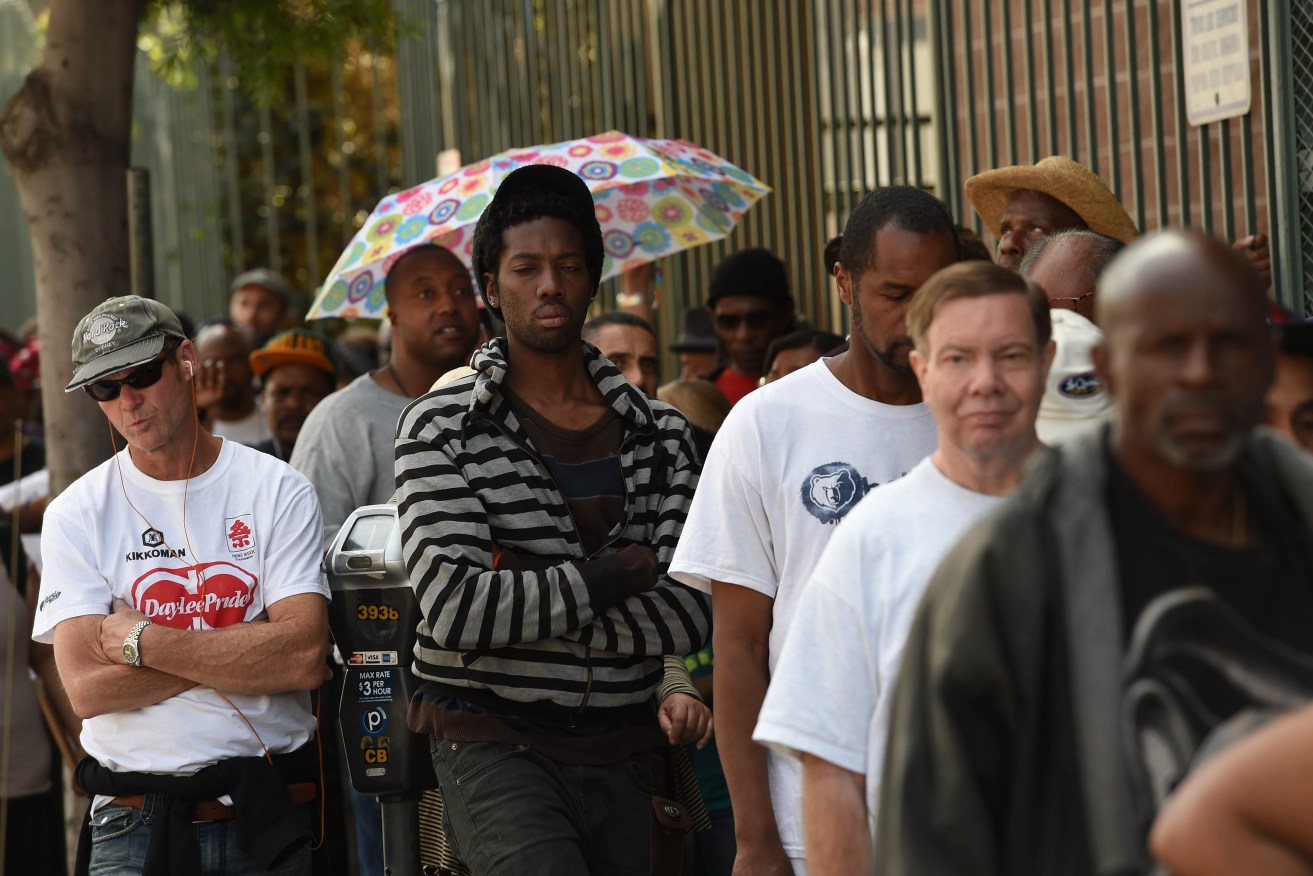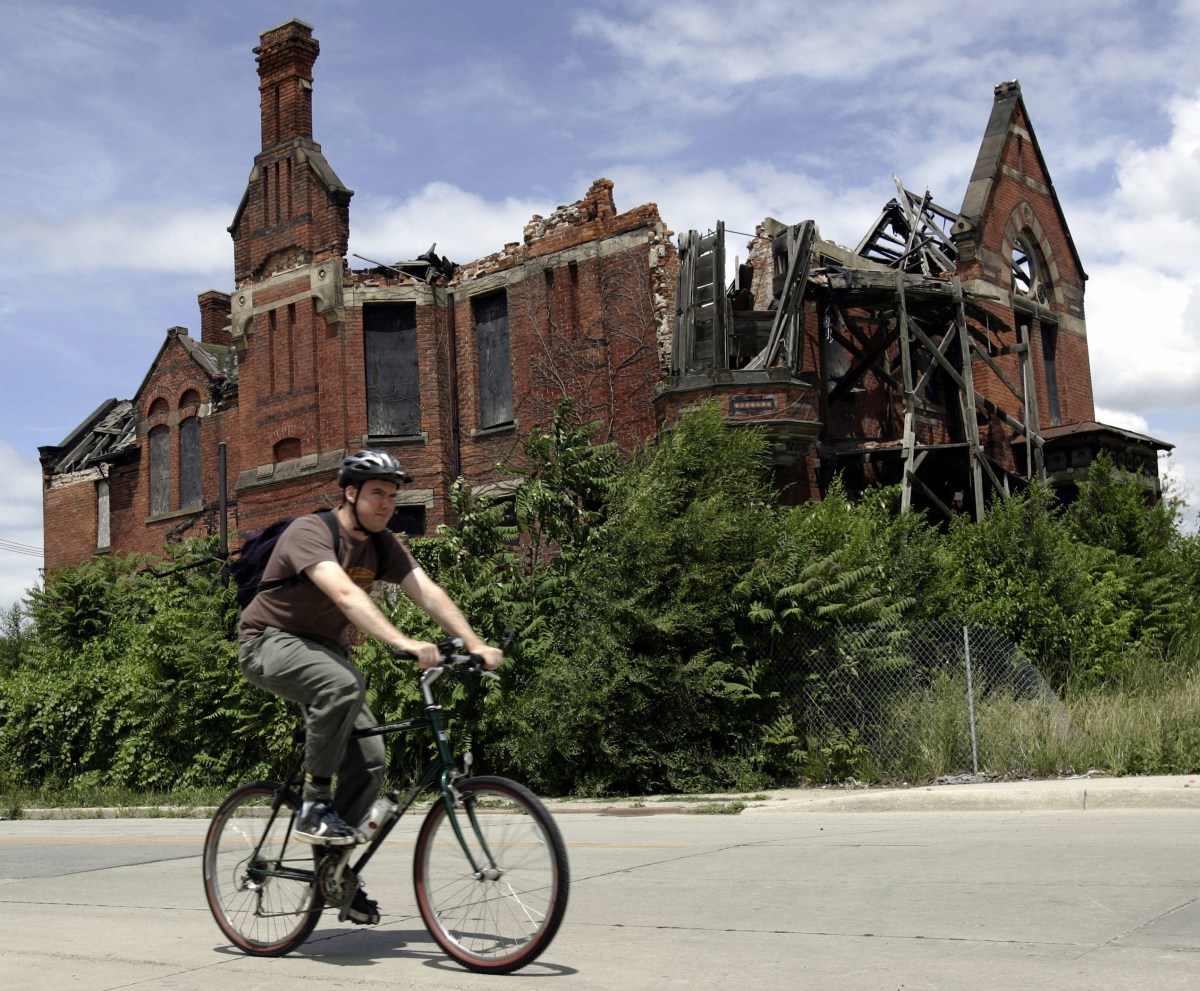Lessons for SA from the US economic experiment
In the latest in his series on how to stimulate entrepreneurship in South Australia, Richard Blandy looks at what we can learn from the different growth rates of states in the USA.


AFP PHOTO/ MARK RALSTON
In my last article, I looked at policies to stimulate entrepreneurship and small business based on studies by the Swedish Foundation for Small Business Research and by the European Commission.
In this article I am reviewing policies in the United States that have allowed some states to grow fast and some to grow slowly, based on Stephen Moore, Arthur B. Laffer and Joel Griffith, 1,000 People a Day: Why Red States Are Getting Richer and Blue States Poorer, May 5, 2015.
In their study, Moore, Laffer and Griffith note that the free and open competition between the 50 states of America provides a natural experiment on the effects of different economic policies.
One group of states (the conservative southern states and the more rural and mountain states such as Arizona, Arkansas, Kansas, Missouri, North Carolina, North Dakota, Oklahoma, Idaho, Texas) offer low tax rates, right-to-work laws, light regulation, low minimum wages and pro-energy development policies. The authors call this group the “Red States”.
Another group of states (the “Blue States” of New York, other north-east states, New Jersey, California, Illinois, Pennsylvania, Minnesota and, until recently, Michigan and Ohio) offer high levels of government spending, high income tax rates on the rich, generous welfare benefits, forced unionisation, high minimum-wages, and restrictions on oil and gas drilling.
The question that Moore, Laffer and Griffith’s study addresses is whether these different state policy choices matter. The answer is that they do.
While there are exceptions, the Red State model of low taxes, light regulation, right-to-work, low minimum wages, pro cheap energy and so forth, substantially outperforms the Blue State model of high taxes, severe regulation, forced unionisation, high minimum wages, high energy costs, and so on.
On taxes, the study compares nine states with no income taxes with nine states with high income taxes over the period 2003-13.
The low tax states averaged an in-migration gain of population of 3.7 per cent, while the high tax states averaged an out-migration loss of population of 2 per cent. The low tax states also averaged a non-farm payroll employment gain of 9.9 per cent, while the high tax states averaged a non-farm payroll employment gain of only 4.3 per cent.
In 27 Blue States, employees were compelled to join a union; in 23 Red States, employees were not.
From 2002-12, in-migration was 3 per cent in the Red States while out-migration was 0.9 per cent in the Blue States. Jobs growth was 6.8 per cent in the Red States and only 1.9 per cent in the Blue States.
The authors examined the same data set for four decades in all, and, regardless of the time period, the changes in population and employment growth all favoured the low tax, less-unionised Red States.
The symptoms of economic decline in the Blue States include falling house prices, a stagnant tax base, business out-migration, capital flight, high unemployment rates, and less money for schools, roads and infrastructure.

A resident passes an abandoned home in what was once a thriving middle class area in Detroit in 2005. AFP PHOTO/JEFF HAYNES
The Government policy variables that increase the outward movement of workers and capital from a state include: a higher and more progressive personal income tax, a higher corporate income tax, a higher property tax, a higher sales tax, a higher estate tax, higher taxes overall as a share of household income, higher state and local government debt, more public employees per 1,000 residents, a higher state minimum wage, higher workers’ compensation costs, and compulsory unionism.
Further, the authors found no evidence that states with higher tax rates, higher minimum wages and more welfare benefits had less income inequality.
They cite Detroit as a warning: over 65 years from 1950, Detroit’s population has fallen almost continuously from 1.85 million (in 1950) to about 0.7 million today. The decline started well before foreign cars started providing strong competition to Detroit’s car industry. Detroit’s decline is associated with high state and city taxes, high unionisation, and high minimum wages (as well as stiff foreign competition in more recent times).
South Australia’s economic problem is structural, not a deficiency of demand that can be fixed by more Government spending. We have known this for at least a quarter of a century since the Arthur D. Little report. We have now had no job growth for the past five years. Premier Weatherill should not be allowed to get away with simply politically-managing our continued economic decline.
Incidentally, the November shut-down of Leigh Creek is a direct result of the rapid expansion of electricity produced by renewable means (wind and solar) in this state (strongly supported by the South Australian Government).
It was always intended that renewables would replace coal-fired power – read Port Augusta’s power station. Power produced by wind and solar is expanding market share not because it is cheaper but because it gets priority in the electricity market over other forms of power production. At some point, as renewables production of electricity expands, base load power stations, like Port Augusta, cannot produce enough power continuously to remain economic. Exit Port Augusta’s power station and end of the road for Leigh Creek.
Richard Blandy is an Adjunct Professor of Economics in the Business School at the University of South Australia.




